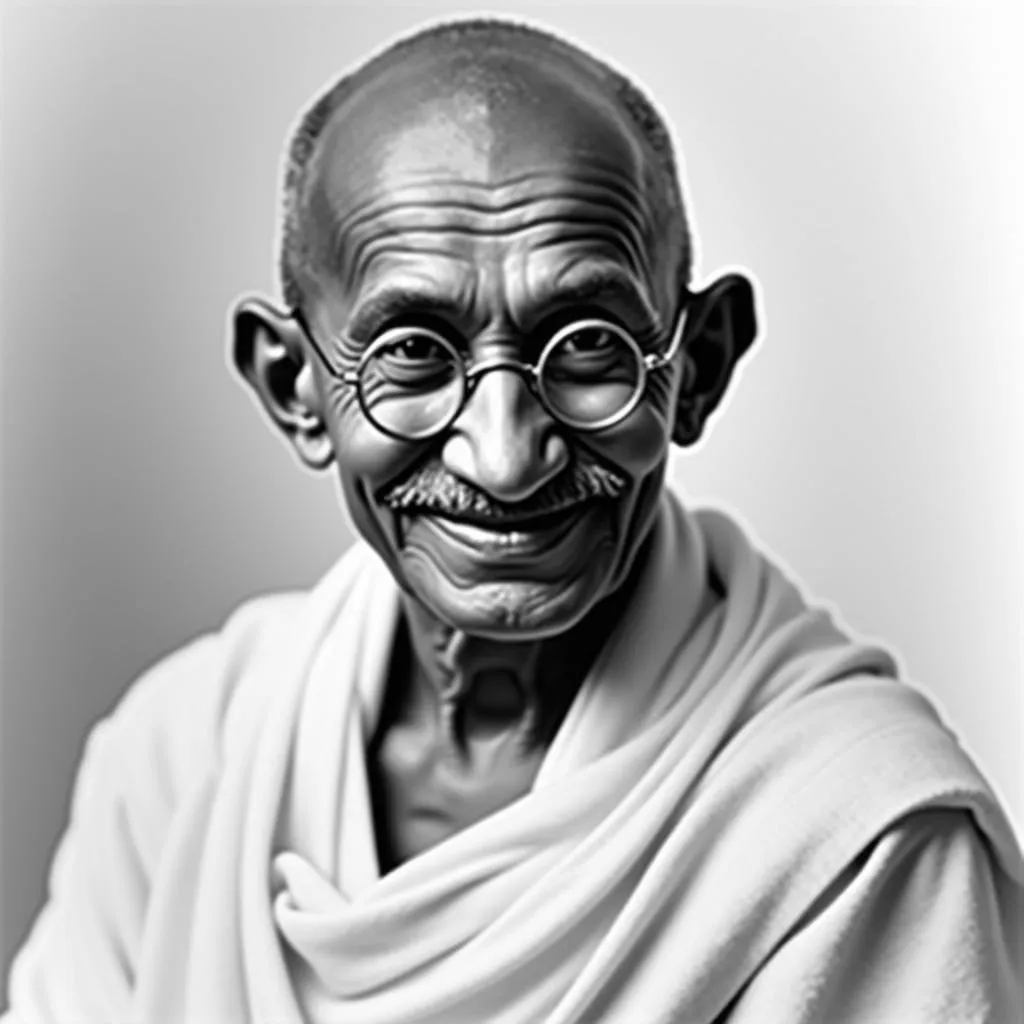The topic of describing a famous historical figure is a common one in IELTS Speaking tests. It has appeared frequently in past exams and is likely to continue being a popular subject in future tests. This topic allows examiners to assess candidates’ ability to discuss historical knowledge, express admiration, and use appropriate vocabulary related to achievements and characteristics.
Part 1: Introduction and Interview
In the first part of the IELTS Speaking test, the examiner may ask some general questions about history and famous figures. Here are some possible questions and sample answers:
- Do you enjoy learning about history?
- Who is a famous historical figure from your country?
- What makes someone a historically significant person?
Let’s look at a sample answer for the first question:
Examiner: Do you enjoy learning about history?
Candidate (Band 7-8 answer): Yes, I find history fascinating. I particularly enjoy learning about how past events have shaped our modern world. It’s incredible to see how decisions made centuries ago still impact our lives today. I often read historical books and watch documentaries to broaden my knowledge of different periods and cultures.
Part 2: Long Turn (Cue Card)
Now, let’s move on to the cue card task. Here’s a sample cue card related to describing a famous historical figure:
Describe a famous historical figure you admire
You should say:
- Who this person is
- When this person lived
- What this person did
- And explain why you admire this personSample Answer (Band 8-9)
I’d like to talk about Mahatma Gandhi, a renowned Indian independence leader who lived from 1869 to 1948. Gandhi is widely regarded as one of the most influential figures in modern history, primarily known for his role in leading India to independence from British rule through non-violent civil disobedience.
Gandhi dedicated his life to fighting for civil rights and promoting peace. He organized and led numerous non-violent protests and campaigns against British colonial rule, including the famous Salt March in 1930. His philosophy of non-violent resistance, which he called “Satyagraha,” inspired civil rights movements around the world, including the African American civil rights movement led by Martin Luther King Jr.
I deeply admire Gandhi for several reasons. Firstly, his unwavering commitment to non-violence, even in the face of severe oppression, demonstrates remarkable moral courage and conviction. He proved that significant social and political change could be achieved without resorting to violence. Secondly, Gandhi’s simple lifestyle and emphasis on self-reliance set an example of how one’s personal life should align with their ideals. His famous quote, “Be the change you wish to see in the world,” continues to inspire millions to take personal responsibility for social improvement.
Moreover, Gandhi’s ability to unite people from diverse backgrounds under a common cause was extraordinary. He bridged religious and social divides, promoting harmony between Hindus and Muslims and working to abolish the caste system. His inclusive approach to leadership and his emphasis on the dignity of all individuals, regardless of their social status, continue to be relevant in today’s world.
In conclusion, Mahatma Gandhi’s legacy of non-violent resistance, commitment to truth and justice, and his role in India’s independence movement make him a historical figure I greatly admire. His life and teachings continue to resonate globally, inspiring new generations to strive for peace and equality.
 Portrait of Mahatma Gandhi
Portrait of Mahatma Gandhi
Follow-up Questions
- How has Gandhi’s influence extended beyond India?
- Do you think Gandhi’s methods of non-violent resistance would be effective in today’s world?
Sample answer for the first follow-up question (Band 8-9):
Gandhi’s influence has extended far beyond India’s borders, leaving an indelible mark on global civil rights movements and political philosophies. His principles of non-violent resistance have inspired numerous leaders and movements worldwide. For instance, Martin Luther King Jr. explicitly cited Gandhi as a major influence in his approach to the American Civil Rights Movement. Similarly, Nelson Mandela drew inspiration from Gandhi’s methods in his struggle against apartheid in South Africa.
Gandhi’s ideas have also shaped international discourse on conflict resolution and peaceful protest. The concept of civil disobedience, which he popularized, has been adopted by various activist groups around the world, from environmental movements to anti-war protests. His emphasis on truth, non-violence, and self-reliance continues to resonate with people fighting for social justice and equality across different cultures and contexts.
Furthermore, Gandhi’s philosophy of simple living and sustainability has gained renewed relevance in the face of global environmental challenges. His critique of unbridled industrialization and advocacy for local, sustainable economies have influenced modern environmentalist thought.
In the realm of international relations, the principle of non-violent conflict resolution that Gandhi championed has been incorporated into diplomatic approaches and UN peacekeeping efforts. His birthday, October 2nd, is celebrated as the International Day of Non-Violence, further cementing his global legacy.
Part 3: Two-way Discussion
In this part, the examiner will ask more abstract questions related to the topic. Here are some possible questions and sample answers:
Examiner: How do you think historical figures are remembered differently in various parts of the world?
Candidate (Band 8-9 answer): The perception of historical figures often varies significantly across different cultures and regions, largely due to diverse historical narratives and cultural contexts. For instance, a colonial-era leader might be viewed as a hero in their home country but as an oppressor in former colonies. These divergent interpretations stem from varying historical experiences and national identities.
Moreover, the passage of time and changing social values can alter how historical figures are remembered. Actions that were once celebrated might be critically reassessed in light of contemporary ethical standards. This explains why there’s often debate around historical monuments and the way history is taught in schools.
Additionally, political ideologies and current geopolitical relationships can influence how different nations portray historical figures. Countries with strained diplomatic relations might emphasize negative aspects of each other’s historical leaders, while allies might focus on shared historical heroes.
It’s also worth noting that globalization and increased cultural exchange are gradually leading to more nuanced and balanced views of historical figures internationally. However, national narratives still play a significant role in shaping public perception.
Examiner: Do you think it’s important for young people to learn about historical figures? Why or why not?
Candidate (Band 8-9 answer): Yes, I believe it’s crucial for young people to learn about historical figures for several reasons. Firstly, studying these individuals provides valuable insights into different historical periods and the social, political, and cultural contexts of their times. This knowledge helps young people develop a deeper understanding of how our current world has been shaped.
Secondly, historical figures often serve as powerful role models. Learning about their achievements, struggles, and character can inspire young people to aspire to greatness and to overcome challenges in their own lives. It can also help them develop critical thinking skills as they analyze the decisions and actions of these figures.
Furthermore, studying historical figures allows young people to gain perspective on leadership, innovation, and social change. It demonstrates how individuals can make a significant impact on society, potentially motivating them to become active and engaged citizens.
However, it’s important that this education presents a balanced view, acknowledging both the accomplishments and flaws of historical figures. This approach promotes critical thinking and helps young people understand the complexity of human nature and historical events.
Lastly, knowledge of historical figures contributes to cultural literacy, which is increasingly important in our globalized world. It enables young people to engage in informed discussions about history, politics, and culture, fostering better communication and understanding across different societies.
 Students studying historical figures
Students studying historical figures
Key Vocabulary and Phrases for High Scores
To achieve a high score in the IELTS Speaking test when discussing historical figures, consider using these advanced vocabulary items and phrases:
-
Influential figure /ɪnˈfluənʃəl ˈfɪɡə/ (noun phrase): A person who has had a significant impact on events or other people.
Example: Mahatma Gandhi was an influential figure in the Indian independence movement. -
Legacy /ˈleɡəsi/ (noun): Something left or handed down by a predecessor.
Example: Nelson Mandela’s legacy of reconciliation continues to inspire people worldwide. -
To shape /ʃeɪp/ (verb): To have a strong influence on the way someone or something develops.
Example: Marie Curie’s discoveries shaped our understanding of radioactivity. -
Pioneering /ˌpaɪəˈnɪərɪŋ/ (adjective): Introducing new and better methods or ideas for the first time.
Example: Einstein’s pioneering work in physics revolutionized our understanding of the universe. -
To overcome adversity /tuː ˌəʊvəˈkʌm ədˈvɜːsəti/ (phrase): To successfully deal with or fight against difficult situations.
Example: Helen Keller’s ability to overcome adversity and achieve greatness is truly inspirational. -
Visionary /ˈvɪʒənəri/ (noun/adjective): A person with original ideas about what the future will or could be like.
Example: Steve Jobs was a visionary who transformed multiple industries. -
To leave an indelible mark /tuː liːv ən ɪnˈdelɪbl mɑːk/ (idiom): To have a lasting influence or effect.
Example: Shakespeare’s works have left an indelible mark on English literature. -
Groundbreaking /ˈɡraʊndbreɪkɪŋ/ (adjective): Innovative; pioneering.
Example: Marie Curie’s groundbreaking research on radioactivity earned her two Nobel Prizes.
Using these terms and phrases appropriately can demonstrate a high level of vocabulary and language proficiency, contributing to a higher band score in your IELTS Speaking test.
Examiner’s Advice
To achieve a high score in the IELTS Speaking test, particularly when describing a famous historical figure:
-
Prepare a range of historical figures: Have knowledge of various historical figures from different fields and eras. This will allow you to choose the most appropriate example for any given question.
-
Practice structured responses: Organize your thoughts logically, covering all points in the cue card. Use linking words to connect your ideas smoothly.
-
Develop your vocabulary: Learn and use a variety of advanced words and phrases related to history, achievements, and personal qualities. Use them naturally in your responses.
-
Provide specific details: Instead of general statements, give concrete examples and anecdotes about the historical figure’s life and achievements.
-
Express and justify your opinions: Clearly explain why you admire the historical figure, providing thoughtful reasons that demonstrate critical thinking.
-
Work on pronunciation and fluency: Practice speaking clearly and confidently. Pay attention to the correct pronunciation of historical names and terms.
-
Engage with the examiner: Show enthusiasm for the topic and be ready to elaborate on your answers in Part 3 of the test.
-
Stay updated: Keep abreast of current discussions about historical figures, as this can help you provide more nuanced and contemporary perspectives in Part 3.
Remember, the key to success in the IELTS Speaking test is not just about knowing the content, but also about how effectively you can communicate your ideas in English.
By following these tips and practicing regularly, you can significantly improve your performance in describing historical figures and in the IELTS Speaking test overall.
Describe a famous writer you admire can be another interesting topic to explore for enhancing your speaking skills in a similar context.


